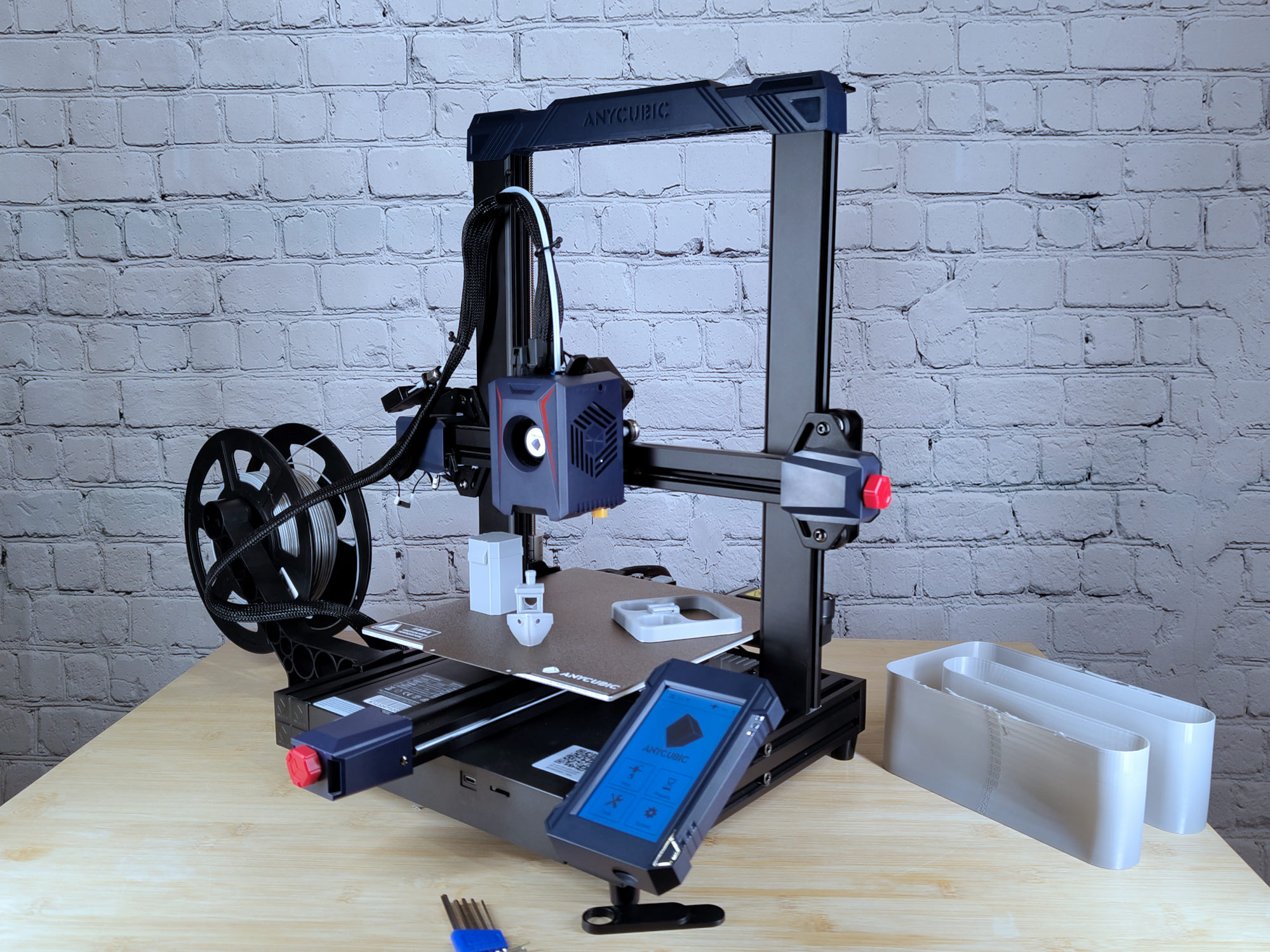
A completely new print head, new guide rails on the X and Y axes, and the new Anycubic LeviQ 2.0 bed leveling are the three most important upgrades from the Anycubic Kobra to the Kobra 2. This makes the 3D printer somewhat faster but above all more convenient to operate. Readjusting the bed leveling is no longer necessary. This should be an interesting innovation for beginners because a 3D print stands and falls with a good first print layer. At the time of this review’s completion, there are still a few days until the Kobra 2’s market launch. Anycubic should use these to improve the last fine adjustments. Then the Cobra 2 could become a price-performance tip. At around 300 Euros, the 3D printer is affordable.
However, the same points of criticism that we have seen in all Kobra 3D printers so far stand out negatively. Only mediocre cable management, tinned cables, and only a few control options via the touchscreen. With the Kobra 2, the impression of poor cable management has intensified in combination with the new filament roll holder.
Compared to the predecessor model, Anycubic has made detail improvements in the Kobra 2, but they have a big impact on the usability of the 3D printer. Longer maintenance intervals and faster setup, even for 3D printing novices, are to be expected.
When it comes to maintenance in particular, Anycubic’s new 3D printer should require significantly less effort than its predecessors. Instead of Delrin rollers that wear out quickly, SG15 ball bearings combined with silver steel axles are much easier to clean and more durable. As long as the axles are regularly dusted and oiled, maintenance should be minimal. Switching from Ultimaker Cura to Prusa Slicer, on the other hand, is certainly not an easy step for every user. However, the results of both programs are equivalent.
In the end, the 3D printer hardly differs from competitors like Anycubic Kobra, Artillery Genius Pro, or VoxeLab Aquila. It is the details that distinguish the 3D printers from each other. Meanwhile, the performance spectrum of modern 3D printers is very similar.
Source link
 notebook.co.id informasi dan review notebook laptop tablet dan pc
notebook.co.id informasi dan review notebook laptop tablet dan pc